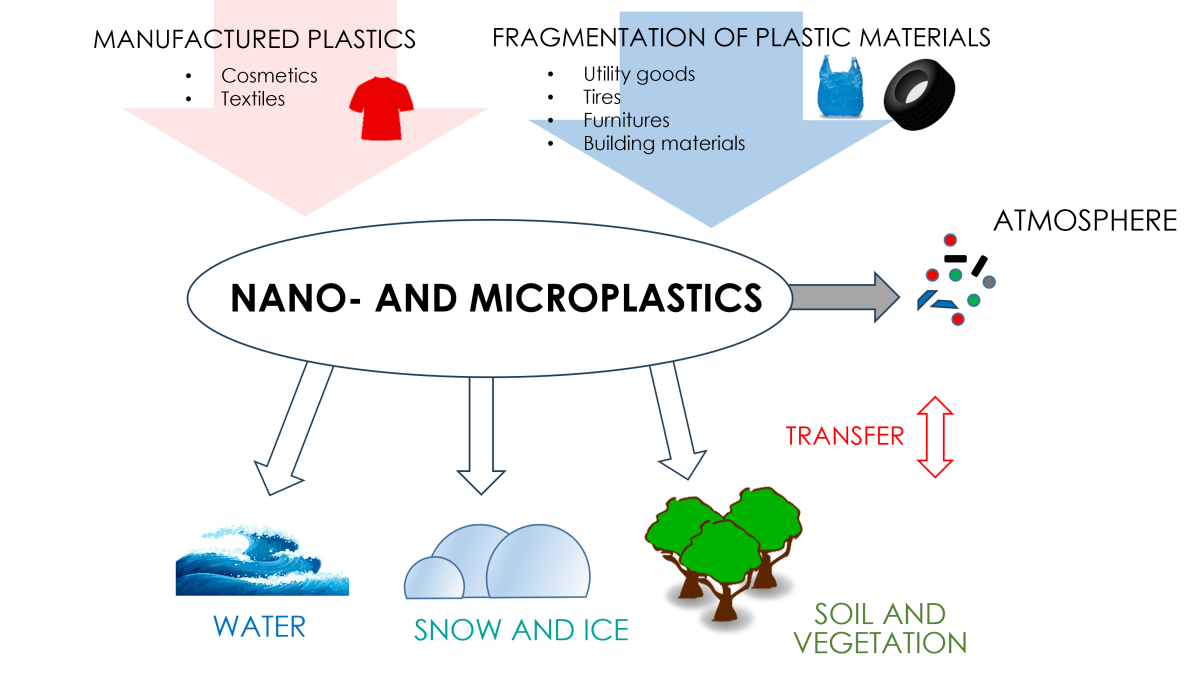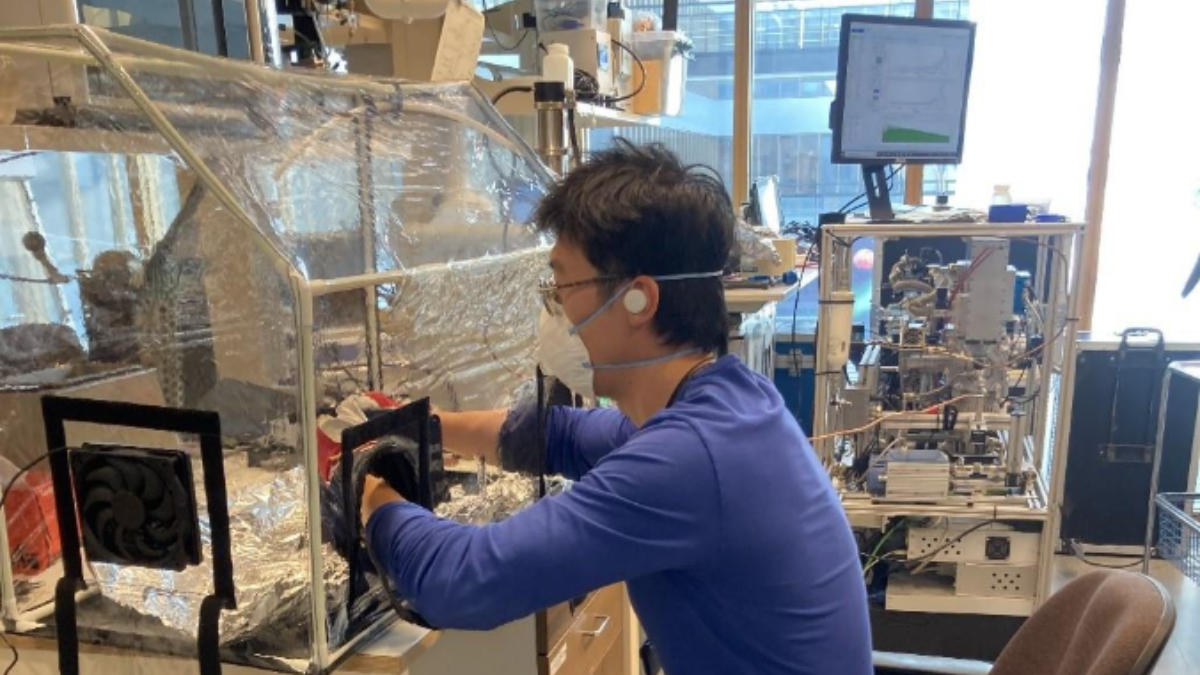A new field of research investigates the effects of nano- and microplastics in the atmosphere

Nano- and microplastics are generally known as a problem for water bodies and aquatic animals. However, in recent years it has been shown that nano- and microplastic particles are also found in the air. Tiny, nearly invisible plastic particles have been detected in urban air, but with air currents they can be carried for up to thousands of kilometres.
“When plastics were detected in snow-covered regions and glaciers far away from any human settlements, it became clear that plastic particles are a global issue that is not limited to inhabited areas,” explains Hilkka Timonen, Principal Scientist at the Finnish Meteorological Institute.
The Finnish Meteorological Institute is currently involved in ACINMUA and PlasticFinder projects that study how atmospheric nano- and microplastics can be detected, collected and analysed. The projects also investigate the overall concentration of plastic particles in the atmosphere.
Nano- and microplastics originate from multiple sources
Hilkka Timonen notes that the term microplastics is slightly misleading in atmospheric research: microplastics are defined as plastic particles smaller than five millimetres in diameter, particles of that size do not stay suspended for long and are not significant for air quality. The most relevant plastic particles for the atmosphere are nanoplastics with a diameter of less than a micrometre and a small fraction of microplastics.
“We are talking about extremely small particles that cannot be seen with the naked eye,” she says.
Atmospheric plastics come from various sources: for example, agriculture, construction materials, textiles, cosmetics, furniture and consumables release plastics into the atmosphere. However, it remains uncertain whether the decomposition of large plastic items in the environment, such as plastic bags, can proceed to the point of forming airborne plastic particles.
Measurements carried out in the ACINMUA project have already shown that the most common source of the atmospheric plastics found in traffic environments is rubber materials coming off from vehicle tyres.
According to Sanna Saarikoski, Senior Research Scientist at the Finnish Meteorological Institute, particle emissions from vehicle tyres are becoming an increasingly important research topic as exhaust emissions from cars are decreasing due to technological advances and the rise of electric cars. While exhaust-related particles are declining, the relative share of other traffic-related particle sources, such as tyres, brakes and road surfaces, is increasing. Electric vehicles make this issue especially topical.
“In electric cars, the challenge is particularly significant, as they are often heavier than internal combustion engine vehicles. The heavier the vehicle, the more material is emitted from the tyres. Tyre wear particle emissions are becoming a key part of future emission standards,” says Sanna Saarikoski.
The Finnish Meteorological Institute is also involved in the NEX-EL project funded by Business Finland, which investigates tyre emissions under laboratory conditions. This enables researchers to examine the impact of different driving situations (speed, braking, acceleration) and tyre types on emissions.

Critical need for new measurement methods
Efforts have been made to detect atmospheric microplastics using, for example, deposition collectors. Hilkka Timonen explains that this often involves placing collection containers on the rooftops and monitoring what is deposited in them. However, this method is not effective for detecting atmospheric nanoplastic particles.
“The method is not optimal for studying airborne plastics, as the containers inevitably collect a lot of other material as well. That is why we have started developing new methods for determining the concentration of ambient nanoplastic particles. Our Aerosol composition research group has decades of experience in developing particle samplers, and we can apply this expertise to these projects,” says Hilkka Timonen. Sanna Saarikoski adds that the development of new measurement methods is also aimed at obtaining real-time data on plastic particles. “We intend to develop devices for monitoring particle concentrations in real time. In this way, we can observe, for example, whether the plastic concentrations vary during the day,” she says.

Research opens new perspectives on atmospheric plastics
Atmospheric plastics are still a fairly new research topic, and the comprehensive impacts of plastic particles on the climate, air quality and human health are only beginning to emerge. While individual studies have been conducted worldwide, the differences in air quality, sources of plastics and atmospheric plastic concentrations between the countries make it difficult to form a complete picture. Data from the Nordic countries is especially scarce, and hardly any real-time measurements of atmospheric nano- and microplastics have been carried out so far.
The purpose of ACINMUA and PlasticFinder research projects is to build expertise to assess how concerned we should be about the atmospheric plastic particles. In summary, Hilkka Timonen and Sanna Saarikoski conclude that although many questions remain unanswered, it is clear that atmospheric nano- and microplastics are a phenomenon that should be taken seriously.
Size and shape determine the fate of particulate matter
Small particles can stay suspended for long periods, and travel thousands of kilometres, all the way to the glaciers. Larger particles tend tosettle near their sources due to their weight. On the other hand, small particles may also stick to surfaces or collide with each other, forming larger aggregates, and thus stay close to their source.
Size is also a critical characteristic of plastic particles in terms of their impact: the size of a particle determines how deep into the human body it can penetrate. The smallest particles can reach the lungs, while larger particles stay in the upper airways. The size of plastic particles is also a decisive factor in terms of climate impacts: small particles can act as cloud condensation nuclei.
Some of the particles found in the glaciers have been surprisingly large. The researchers speculate that their aerodynamic shape may have allowed them to travel further than expected. This shows that in addition to the size, the shape and density of particle affect its ability to remain airborne.
More information about the projects
The aim of ACINMUA project is to develop sampling and analytical methods to the airborne nano- and microplastics and to determine their concentrations in the atmosphere. The project is carried out in collaboration between the Finnish Meteorological Institute and the Finnish Environment Institute. Project duration: 1.9.2023–31.8.2027. Read more about the ACINMUA project.
The PlasticFinder project is developing a unique method for real-time detection of airborne nano- and microplastic particles in field conditions. The project is carried out in collaboration between the Finnish Meteorological Institute and the University of Helsinki. Project duration: 1.9.2025–31.8.2029. Read more about the PlasticFinder project.
Text Jenni Korpela
